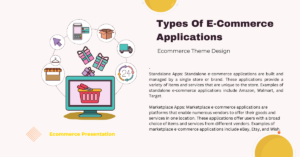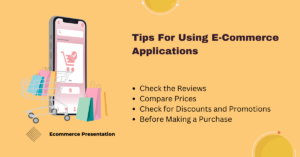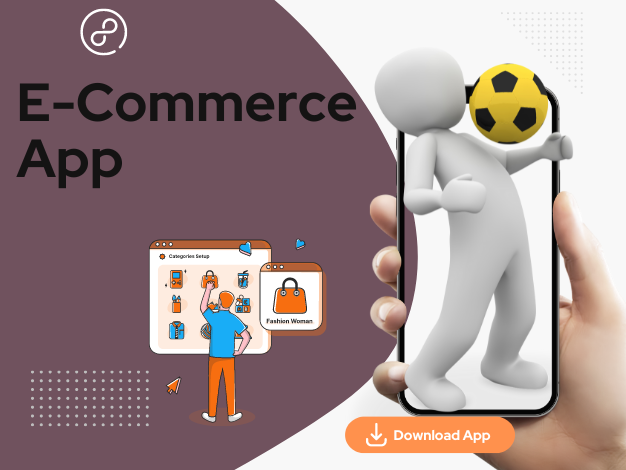Who is an app developer?
An app developer is a software developer or programmer who specialises in designing programmes, or apps, for electronic devices such as smartphones, tablets, and desktops. App developers often have knowledge in one or more programming languages, such as Java, Swift, C++, or Python, and may have familiarity with a range of development tools, frameworks, and platforms.
The function of an app developer may vary based on the unique project and the size of the development team. Some developers work individually, developing and coding complete applications from scratch, while others work as part of bigger teams, working with designers, project managers, and other experts to produce sophisticated, multifunctional programmes.
The app development process generally comprises a number of phases, including idea and design, coding and development, testing and quality assurance, and deployment and maintenance. App developers may be engaged in all or part of these phases, depending on their degree of experience and the demands of the project.
In addition to technical talents, app developers may also need to have excellent problem-solving, communication, and teamwork skills, as well as the ability to work effectively under pressure and achieve tight deadlines. As the app development business continues to expand, app developers will need to keep up-to-date with the newest technologies, programming languages, and development tools in order to remain competitive and successful in their professions.
Why app developers are essential
App developers are indispensable in the creation of mobile applications, which have become an indispensable part of our daily lives. Mobile applications are software programs designed for smartphones, tablets and other handheld devices that enable users to do a variety of things like stay in contact with friends and family, manage money efficiently, shop online – you name it! They play an essential role in keeping us all connected!
Here are some reasons why app developers are needed:
To create new applications: App developers create apps that meet consumer demands by working alongside designers, product managers, and other stakeholders to conceptualize, construct and enhance solutions that solve real-world problems. They collaborate closely with these individuals to ensure successful outcomes in the real world.
Update and Maintain Applications: App developers are also required to upgrade and maintain existing apps in order to guarantee they remain functional and up-to-date. They fix issues, add features, and optimize programs for improved performance.
To Ensure Compatibility: App developers ensure their applications are compatible with multiple devices, operating systems and platforms. They test them rigorously to guarantee they work optimally across various gadgets and are accessible to a broad range of consumers.
Enhancing User Experience: App developers strive to create applications that are user-friendly and straightforward to operate. Their designs focus on creating intuitive, beautiful, and captivating interfaces and features in order to elevate the overall user experience.
In conclusion, app developers are essential for creating new applications, updating and managing current ones, ensuring compatibility with different devices and operating systems, and optimizing the user experience. Without app developers, we wouldn’t have the wide array of mobile applications we rely on daily for connectivity, information gathering, entertainment – you name it! Without their work we wouldn’t have these incredible choices of applications to choose from!
How app developers fix issues
When app developers discover errors in their code, they must take immediate steps to fix them so that the program functions as intended. Here are some common steps app developers take when rectifying errors:
- Reproduce the Issue: The initial step in fixing an error is to reproduce it. Developers need to understand why and when this problem appears, so they may use debugging tools to examine their code and pinpoint its source.
- Identify the Error: Once a mistake has been recreated, developers must determine why it occurred. They can review both code and logs to identify what went wrong.
- Create a Solution: Utilizing their understanding of the issue, developers must devise an appropriate solution. This could include editing code, altering settings or upgrading dependencies.
- Testing the Solution: Once a solution has been developed, it must be tested to guarantee it functions as intended. Developers may use automated tests, manual testing or both methods to confirm that the mistake has been rectified.
- Deploy the Fix: Once the solution has been tested and validated, it can be deployed to the app. Developers may use version control systems to manage code changes and confirm that the repair has been correctly integrated into the app.
- Monitor for Recurrence: After the patch has been released, developers must monitor the app to ensure that the issue does not recur. They may use monitoring tools and logs to keep an eye on performance and detect any new faults that may appear.
In conclusion, app developers typically resolve problems by reproducing the issue, identifying its cause, creating a solution, testing it out, deploying it and monitoring for recurrences. By following these procedures closely, developers can ensure their applications are free from mistakes and perform as intended.
Describe App
An “application”, also referred to as an “app”, is a software programme designed to perform certain tasks or provide specialised services on mobile devices like smartphones or tablets or computers. Applications may be downloaded through app stores or other distribution methods and once installed, users can access and activate them for their intended purposes. Examples of apps include games, social networking applications, productivity tools and e-commerce platforms. Programmers and engineers design and develop these applications using various programming languages, tools and frameworks.
Examples of Apps
Numerous applications can be found on different app stores and distribution platforms for various devices. Here are some popular examples:
- Social Media programmes like Facebook, Instagram and Twitter enable users to stay in touch and exchange updates, photographs and videos with friends and followers.
- Communication applications like WhatsApp and Telegram enable messaging, making voice or video calls and sharing media files.
- Entertainment apps like Netflix, Spotify and YouTube give users access to movies, TV shows, music and videos.
- Productivity applications like Google Drive, Trello and Slack enable collaboration on documents, organize tasks and communicate with colleagues.
- Games apps such as Candy Crush, PUBG and Fortnite give users a variety of game options to enjoy alone or with friends.
- E-commerce applications like Amazon and eBay enable customers to browse and purchase items from an array of online retailers.
- Travel apps such as Airbnb, Google Maps and Trip Advisor provide users with travel-related info, booking options and reviews.

These are just a few examples of the many types of apps available – many more categories and types exist to offer various functions and services to users.
How apps Work
Apps (short for applications) are software programs that run on mobile devices or computers to perform specific functions or sets of functions. Apps are created and developed by software engineers and developers using programming languages, tools, and frameworks.

Here are the general steps apps take to develop:
- Design and Development: The app development process starts with design and development, where developers create user interfaces, write code, and test for functionality. This phase typically lasts around two months.
- Installation: Once an app is developed, it is distributed to users through app stores or other distribution channels. Users can download and install the application on their mobile devices or computers.
- Launch: Once installed, users can launch the app by tapping its icon. This launches and initializes the program so you can begin using it immediately.
- User Interface: An app’s user interface allows the user to interact with it and access its features. It should provide a straightforward, intuitive experience for the user.
- Data Storage and Processing: Applications may store and process data to fulfill certain purposes. For instance, a fitness app might record the user’s exercise data and evaluate it to provide insights into their progress.
- Connectivity: Many applications require an internet connection in order to function. This connection may be utilized for obtaining data from other sources, transferring it to a server, or providing access to various services.
- Updates: App developers often release updates to enhance functionality, fix bugs, or introduce new features. Users can upgrade the app through the app store or other distribution channels.
App developer provide value to users by processing user inputs, accessing data and performing specific functions.
Future of app developer?
The future of application improvement is splendid and promising, driven by mechanical progressions and developing client needs. Here are a few vital patterns and potential outcomes that might shape the future of application improvement:
1. Cross-Stage Improvement: With a developing assortment of stages and gadgets, application engineers will keep on zeroing in on cross-stage improvement structures and instruments. This permits them to fabricate applications that can run on different stages, like iOS, Android, and web, decreasing improvement time and expenses.
2. Moderate Web Applications (PWAs): PWAs are web applications that offer a client experience like local applications. They can be gotten to through internet browsers and introduced on a client’s gadget, overcoming any issues among web and application improvement. The future might see expanded reception of PWAs as they offer more prominent adaptability, simpler updates, and further developed execution.
3. Web of Things (IoT) Reconciliation: As IoT gadgets become more predominant, application designers will assume a pivotal part in making applications that associate and communicate with these gadgets. This incorporates creating applications that control shrewd homes, wearable gadgets, associated vehicles, and other IoT-empowered items.
4. Man-made brainpower (computer based intelligence) and AI (ML): computer based intelligence and ML advancements are turning out to be progressively coordinated into application improvement. Engineers might integrate artificial intelligence fueled highlights, for example, regular language handling, PC vision, chatbots, and customized suggestions to upgrade application usefulness and client encounters.
5. Expanded Reality (AR) and Computer generated Reality (VR): AR and VR advances are getting some decent forward momentum in different ventures, including gaming, amusement, training, and retail. Application engineers will assume a crucial part in making vivid AR and VR encounters, whether through independent applications or coordination inside existing applications.
6. Low-Code and No-Code Improvement: The ascent of low-code and no-code advancement stages permits people with insignificant coding information to make applications utilizing visual connection points and pre-constructed parts. This democratizes application improvement, empowering more individuals to assemble their own applications without broad programming abilities.
7. Upgraded Security and Protection: As information breaks and security concerns keep on being critical issues, application designers should focus on security and protection measures. This incorporates executing encryption, secure verification techniques, and consistence with information assurance guidelines.
8. Application Adaptation Models: Engineers will investigate new adaptation models past conventional paid applications, for example, in-application buys, memberships, freemium models, and designated publicizing. The future might see a more prominent accentuation on customized and contextualized adaptation draws near.
9. Client Driven Plan and Client Experience: Client driven plan will stay a urgent part of application improvement. Designers will zero in on making natural, drawing in, and outwardly engaging connection points that give consistent client encounters across various gadgets and stages.
10. Constant Coordination and Arrangement: Application engineers will take on dexterous advancement strategies, stressing nonstop joining and organization to guarantee quicker application refreshes, bug fixes, and component improvements. This empowers engineers to answer rapidly to client criticism and market requests.
In outline, the future of application improvement is supposed to be formed by cross-stage advancement, arising advances like IoT, artificial intelligence, AR, and VR, as well as an emphasis on security, client experience, and productive advancement rehearses. Application designers will keep on assuming an imperative part in molding the computerized scene and meeting the developing requirements of clients.

